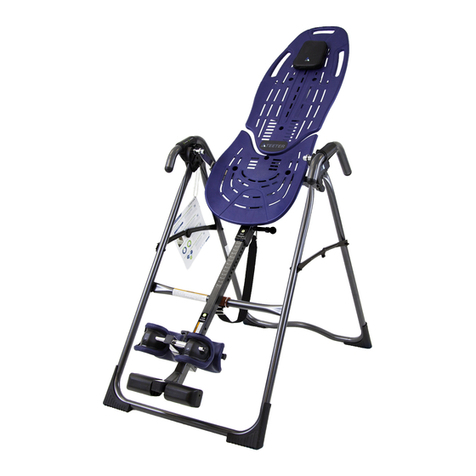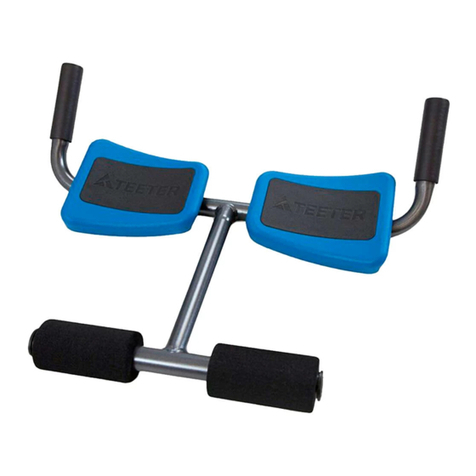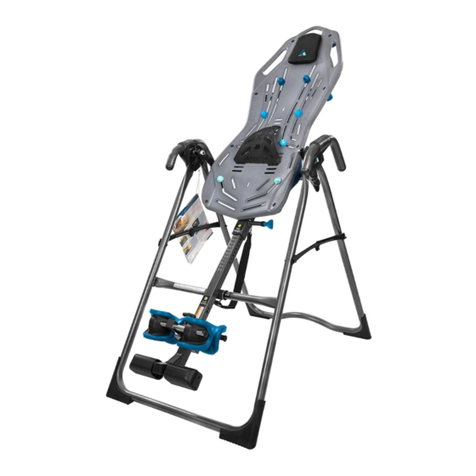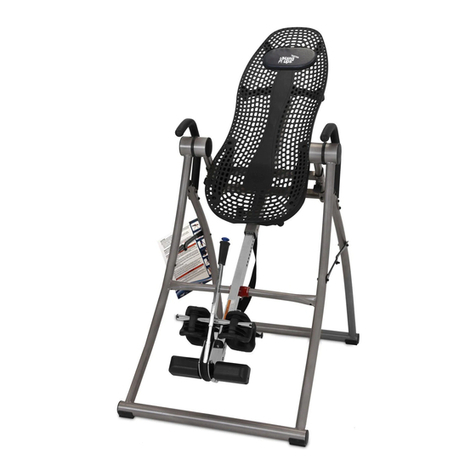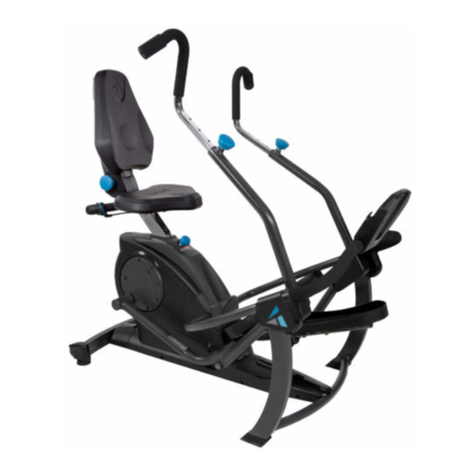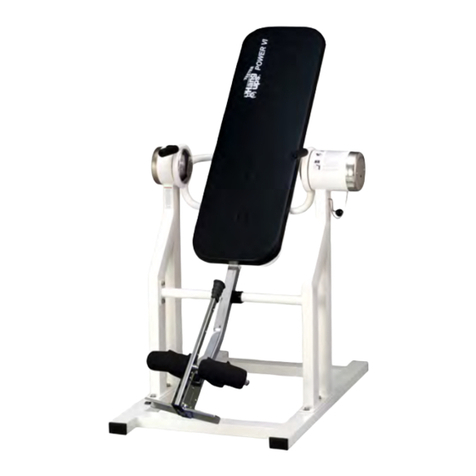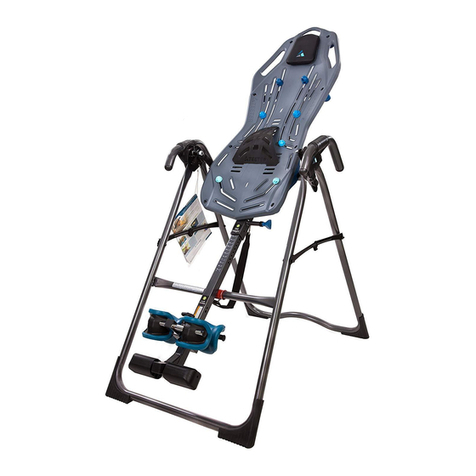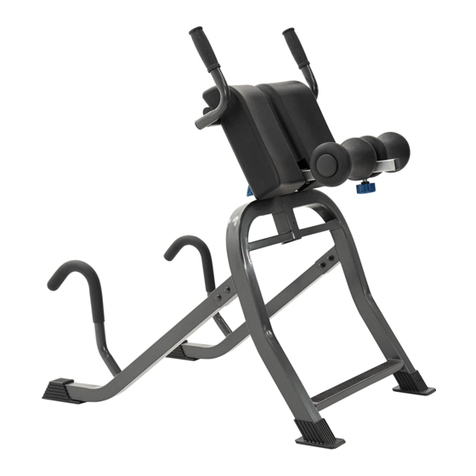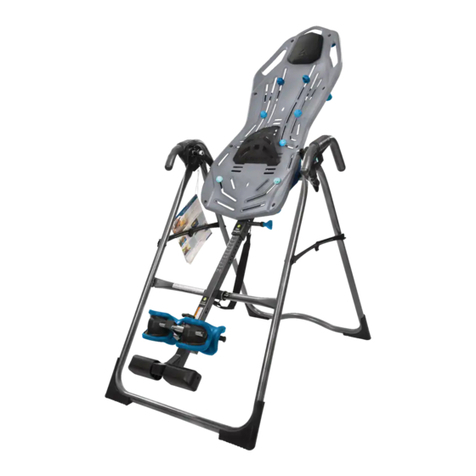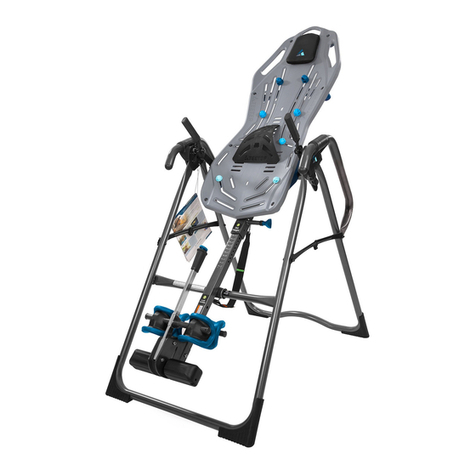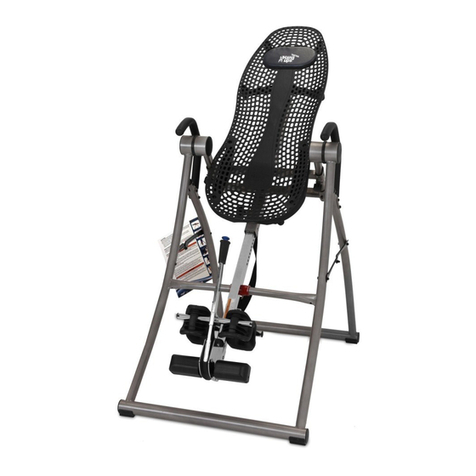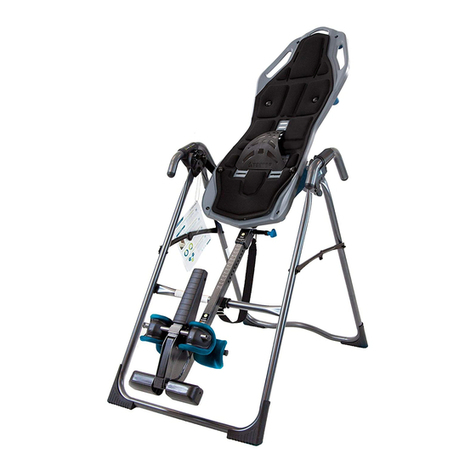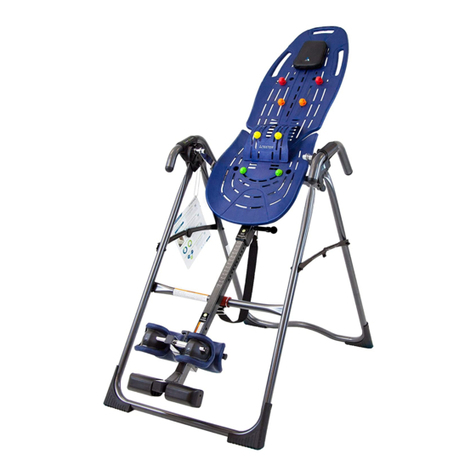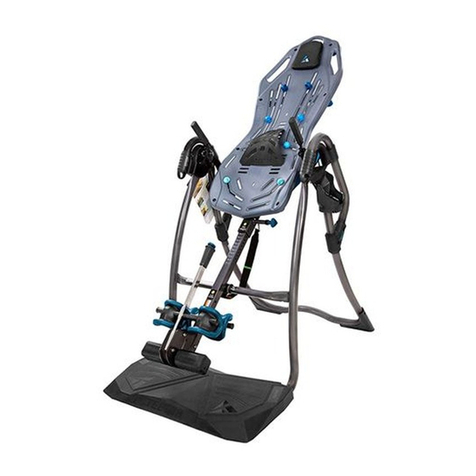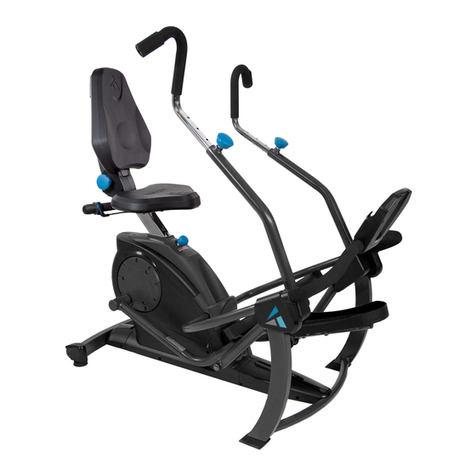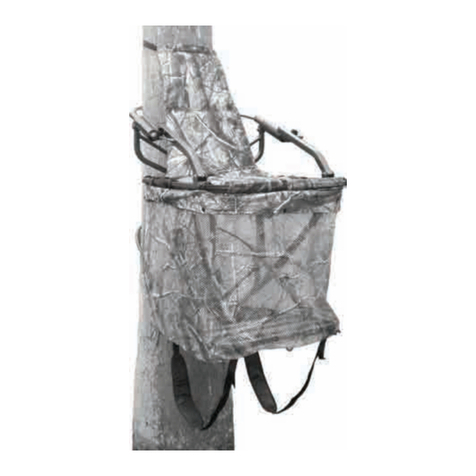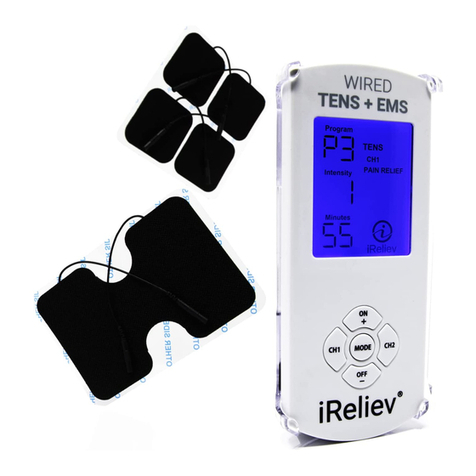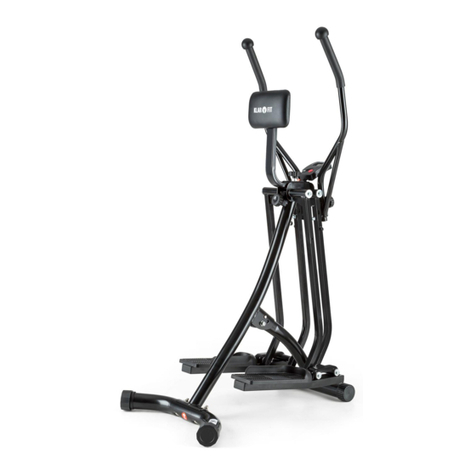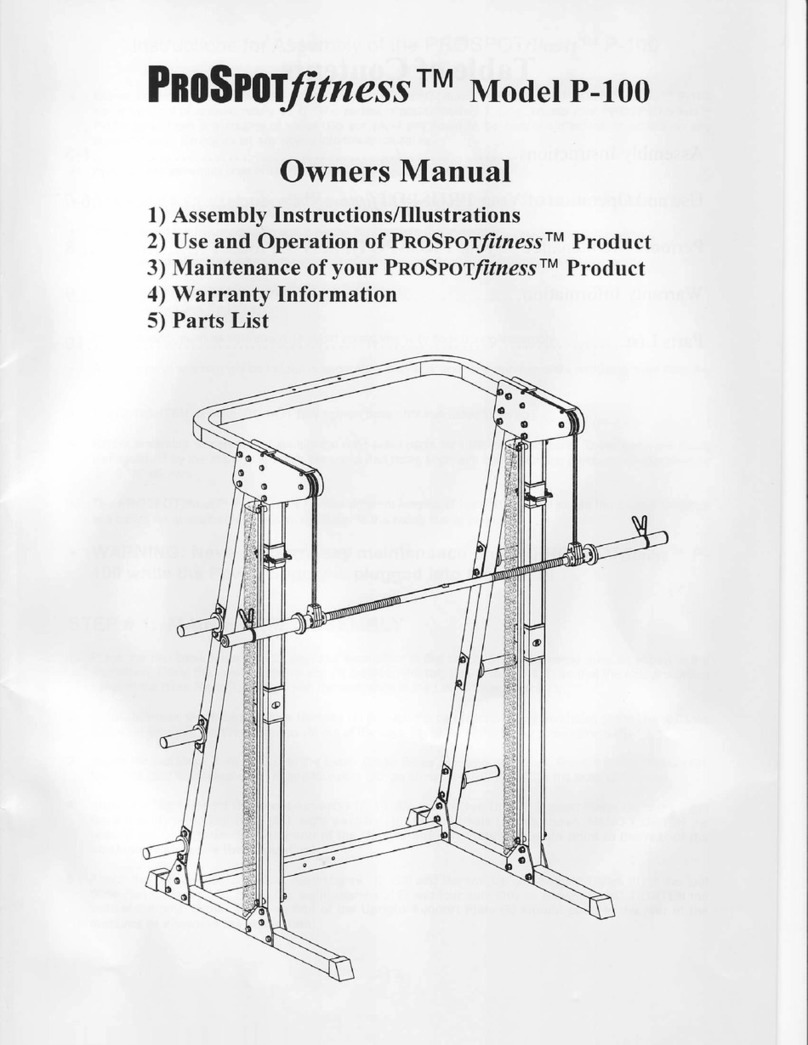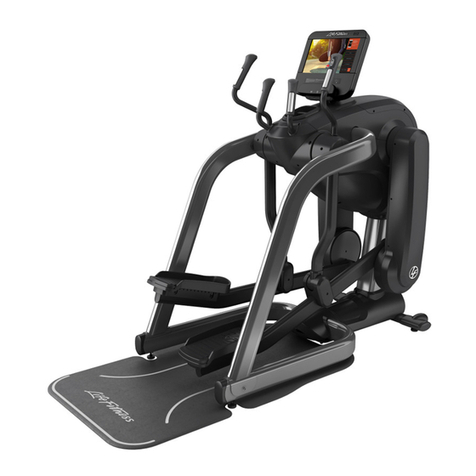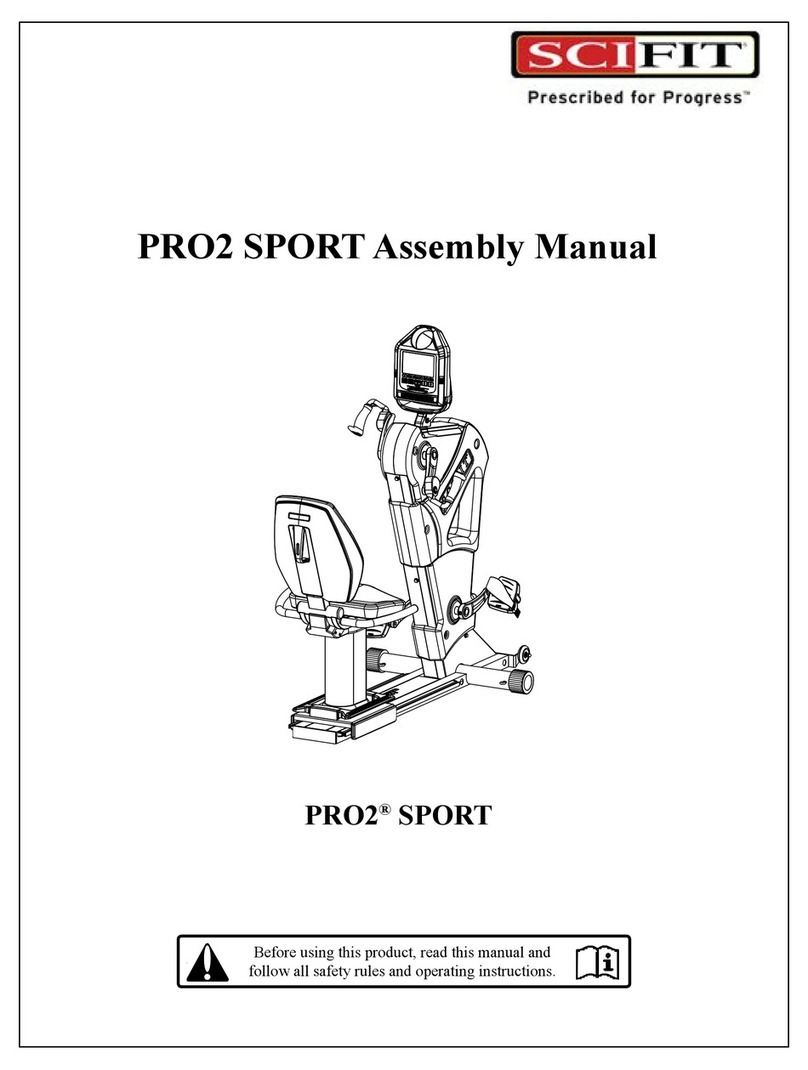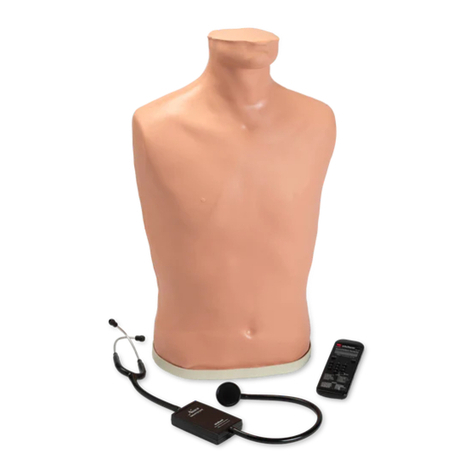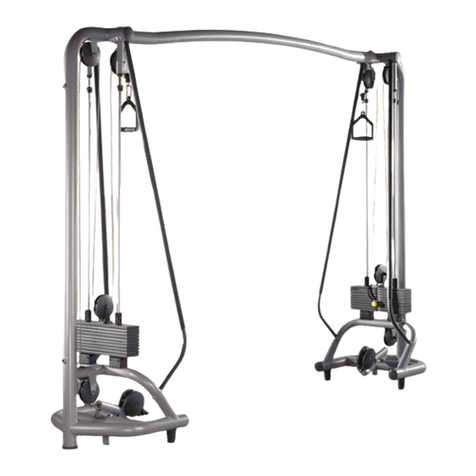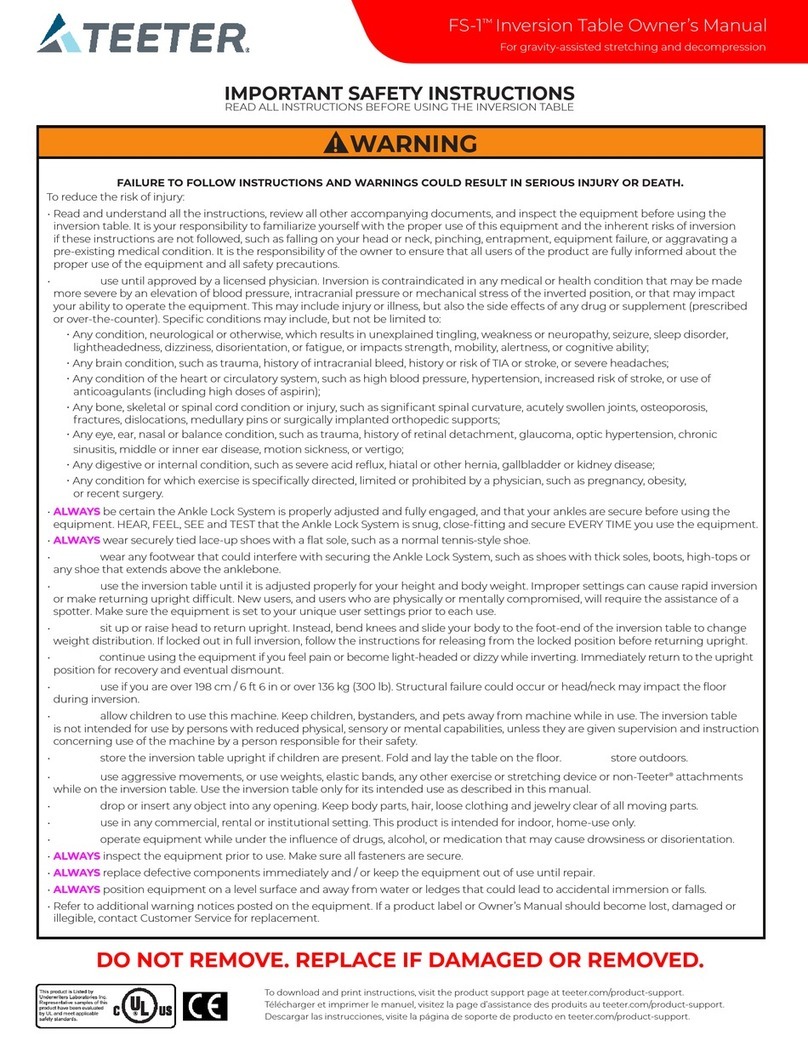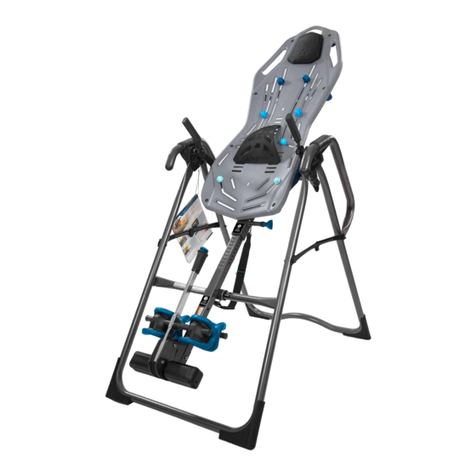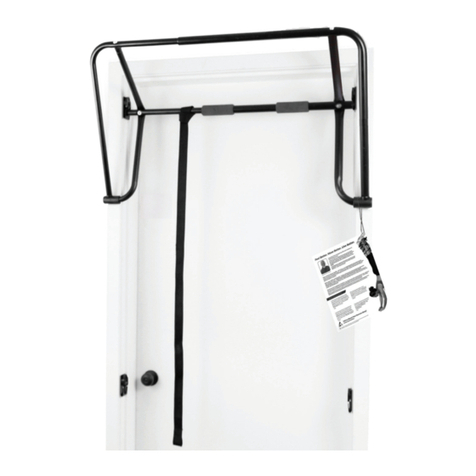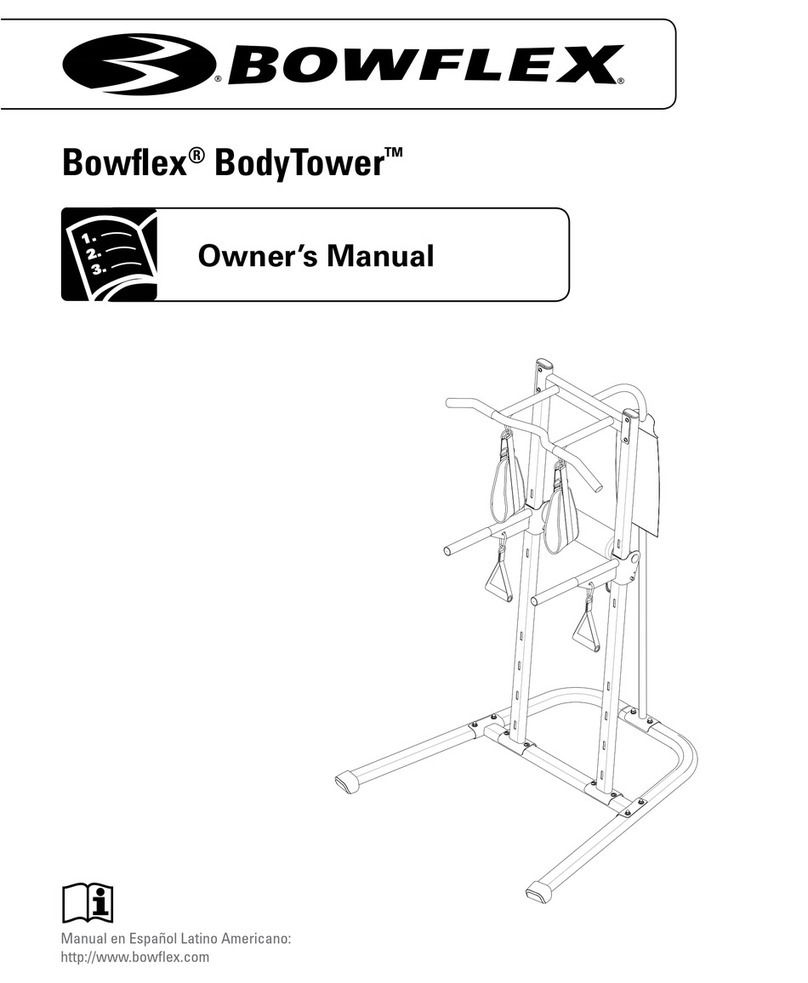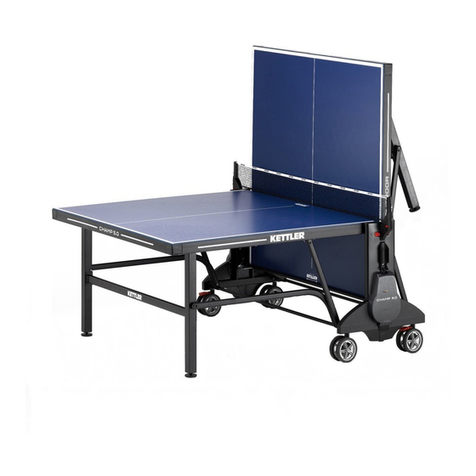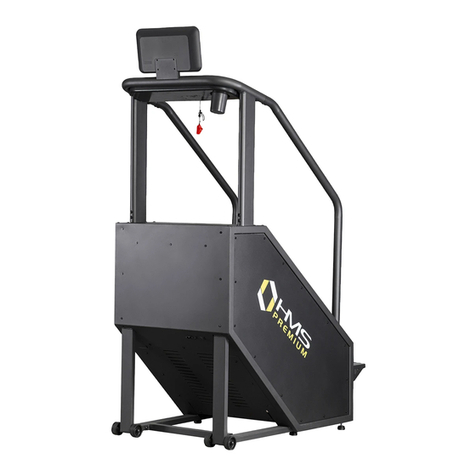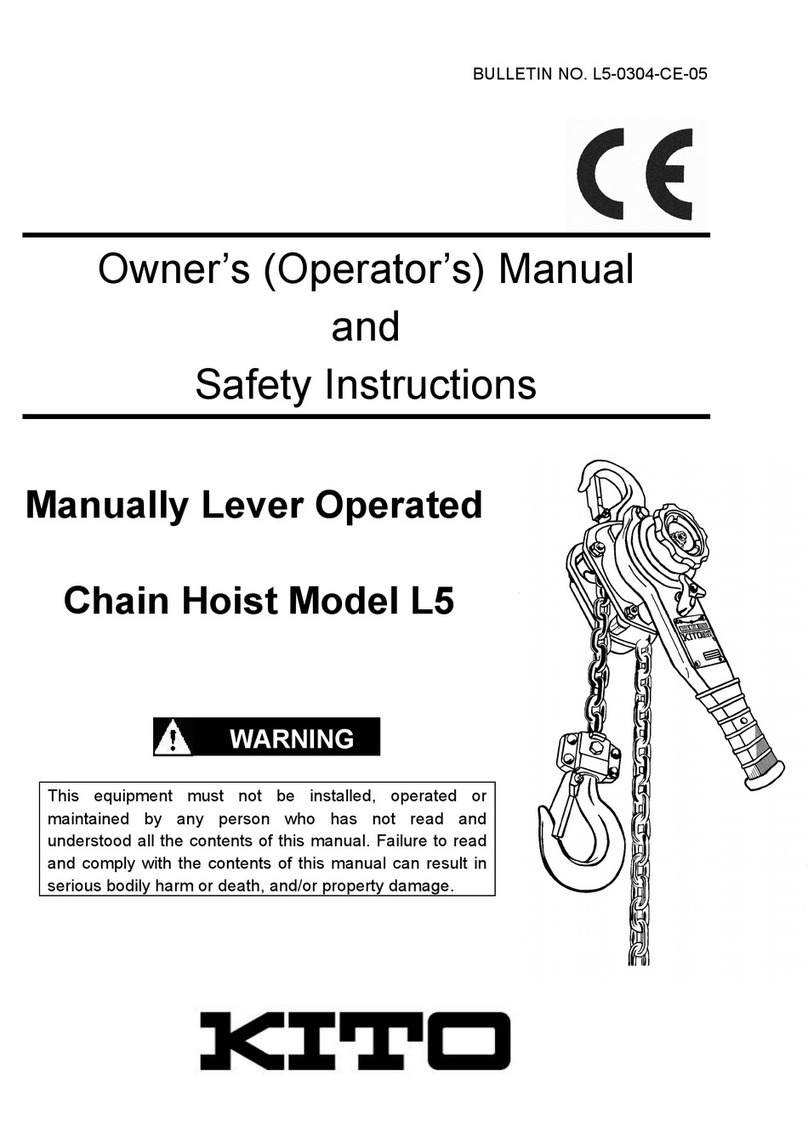ADJUSTING
BEFORE YOU INVERT make sure that the table rotates
smoothly to the fully inverted position and back, and that all
fasteners are secure. Make sure the user settings described
below are properly adjusted for your unique needs and
body type. Take your time nding your proper settings and
remember them. Check these settings every time prior to using
the equipment.
Rotation Adjustment: Find Your Setting
The Rotation Adjustment Setting controls the responsiveness or rate of rotation.
There are three holes; the hole selection depends both on your body weight and the
rotational responsiveness you desire (diagram at right). For users just learning
to use the inversion table, we recommend starting with Setting C (Figure 1).
IMPORTANT: Set the Rotation Adjustment Arms in the same hole setting on each
side. See more detailed instructions on using the Pinlock Knob in the Assembly
Instructions or refer to the instructional labels on your inversion table.
Height Setting: Adjust the Main Shaft
The height settings are labeled on the Main Shaft in both inches and centimeters.
• Loosen the De-rattler knob.
• Pull out the height selector locking pin with your right hand while sliding the Main Shaft
with your left (Figure 2).
• Slide the Main Shaft until the last setting you can read is one inch greater than your
height. e.g. If you’re 5’10” (178 cm) the last numbers you’ll be able to read will be 5’11”
(180 cm). NOTE: The best height setting for you will depend on your weight distribution
and could vary one or two inches on either side of your actual height. Starting at one or
two inches more than your height will help to ensure that the rotation of the table is not
too fast.
• Release the height selector locking pin so that it fully engages in a hole. If you choose,
re-tighten the De-rattler knob.
Tether Strap: Adjust to Desired Angle
For rst time users, attach the Tether Strap to help control your angle of rotation (Figure 3).
You can increase the angle of rotation allowed by the Tether Strap as you become more
comfortable using the table, or remove it all together for full inversion.
Ankle Comfort Dial: Find Your Setting
The Ankle Comfort Dial can rotate into a High or Low setting (Figure 4). There is a one inch
height difference between the settings. The setting you select will vary by the type of shoes
you wear and your ankle type. Try inverting in both settings to determine which one is most
comfortable for you.
The Ankle Comfort Dial should be set so the ankle clamps are secure around the smallest
part of the ankles (with minimal distance between the ankle clamp and the top of your foot);
this will reduce sliding on the Table Bed while inverted.
Prepare to Mount
•
ALWAYS
wear securely tied, lace up shoes with a at sole, such as a tennis shoe.
• DO NOT wear shoes with thick soles, boots, high-tops or any shoe that extends above
the ankle bone, as this type of footwear could interfere with properly securing your
ankles.
23
MOUNTING
Securing Your Ankles
• Stand with your back to the Table Bed - do not use the inversion table face down.
• Step over the Main Shaft, placing your feet on the oor on either side. To balance
yourself, rest only your lower body against the Table Bed as you slide one ankle at a time
between the ankle clamps onto the Ankle Comfort Dial. Be sure to slide your ankle in
from the side (Figure 5); DO NOT insert the foot through the ankle clamps as you would
slide your foot into a shoe. Your feet should always be either on the oor or on the Ankle
Comfort Dial; never use any other part of the inversion table as a step (Figure 6 and 7) .
DANGER: LOCKING PIN
NOT ENGAGED
LOCKING PIN
FULLY ENGAGED
Fig. 1
Fig. 2
Fig. 3
Fig. 4
Fig. 8
Fig. 9
Fig. 10
Fig. 11
DO NOT lean your upper body against the Table Bed before securing your ankles.
FAILURE to engage the ankle locking pin fully could result in serious injury or death!
DO NOT deviate from these instructions.
WARNING
!
WARNING
!
For your rst few inversion sessions, ask a spotter to assist you until you are able to
nd your correct balance setting and are comfortable with the operation of the table.
Fig. 5
Fig. 6
Fig. 7
WARNING
!
DO NOT step on the crossbar of the A-frame or on top of the ankle clamps as
this could cause the table to rotate resulting in serious injury or death!
• Press your ankles back rmly against the rear ankle clamps.
• Rotate the top of the rear clamps slightly inward toward your ankles, this will increase
your comfort while inverting.
• Pull the locking pin out to allow the front ankle clamps to snap closed against your ankles
(Figure 8). Make sure your pant legs do not interfere with obtaining a secure closure.
• Adjust the front ankle clamps to make sure both the front and rear ankle clamps are snug
against your ankles. Release the locking pin so that it fully engages a hole setting (Figure 9).
• If the locking pin does not automatically engage in a hole (Figure 10), push the front
ankle clamps inward until the pin engages fully in the next tightest hole setting. Verify that
no part of the footwear or garments can touch or interfere with the locking pin in any way
during inversion.
• Use the concept of HEAR - FEEL - SEE every time you secure your ankles: HEAR the
locking pin click into place; FEEL the locking pin to make sure it is fully engaged in a hole
setting; SEE that there is NO space between the locking pin and its base.
Test Your Balance Setting
The inversion table is sensitively balanced and it responds to very small changes in weight
distribution. As a result, you must always test to make sure you have the correct height
setting. Ensure that there is clearance to rotate in front, above and behind you. To begin,
rest your head on the bed and place your arms at your sides, then slowly place your arms on
your chest.
• If your head is lower than your feet, lengthen the height setting by one hole and
test again.
• If your feet do not move at all, shorten the height setting by one hole and test again.
• If the table comes to rest with your feet lifted a few inches off the A-frame, then you have
found the correct balance setting (Figure 11).
This is an important step - spend the time needed to nd your correct balance setting. Your
setting should remain the same as long as your weight does not uctuate substantially.
A
B
C


